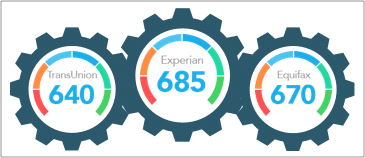You can trade in a car even if you haven’t finished paying for it yet. The process can be quite simple or quite complicated. The difference lies in whether the car is worth more than you owe on the loan (positive equity) or whether the car is worth less than the amount you owe on the loan (negative equity). Understanding the difference and assessing your car’s value against the amount you owe will help you make a good decision on trading in your car.
How Does a Trade-In Work?
If you’re considering replacing your old car, you may be thinking of trading it in on a new vehicle. A trade-in can boost your down payment and defray the cost of a new car.
Before you decide on a trade-in, consider the possibility of selling your car to a private buyer. It will take time and effort, but you’re likely to get a better price for the car than a dealer will offer you as the trade-in value.
If you prefer the convenience of a trade-in, you’ll start with the following steps:
- Estimate your car’s trade-in value. The Kelley Blue Book or Edmunds Car Appraisal Tool will give you a reasonable estimate of your car’s current market value.
- Get a professional appraisal. A professional appraiser will inspect your vehicle and give you a written estimate of its value. This can be very useful when you negotiate your vehicle’s trade-in value with a dealer.
- Compare the appraised value to the balance you owe on your loan. If your car is worth more than the balance on your loan, you have positive equity in your vehicle. If the value of your car is lower than the balance of your loan, you have negative equity: you are underwater on your loan.
If you have positive equity your trade-in is likely to be a straightforward process. If you have negative equity you will have some choices to make and you’ll have to watch out for some potential traps.
Can You Trade In Your Car When You Owe Money On It?
If you have negative equity the trade-in becomes more complex. You will not receive any credit against the cost of your new vehicle. You will have to pay the dealer the difference between the value of your car and the remaining loan balance.
You have several options if you want to trade in a car with negative equity:
- Consider waiting. You may wish to delay the purchase of a new car until your loan is paid or until you have positive equity. If your negative equity is not large, putting extra money into car payments for a few months might bring you above water.
- Sell privately. If your negative equity is relatively small, consider trying to sell your car to a private buyer. You may get enough to cover the loan.
- Pay the dealer. The most straightforward way to handle a trade-in with negative equity is to pay the dealer the difference between the car’s value and the loan balance. That’s money out of your pocket, but it will close the deal.
In many cases, the most cost-effective move will be to wait until your loan is paid or your equity is positive.
If you are having a hard time making the payments on your car and you want to replace it with a less expensive new car or even a used car, trading it in may be worth the effort, especially if your new loan will carry a lower interest rate. It will cost you money upfront but if it gets you smaller payments it could be worth the cost.
You may encounter dealers who offer to pay off your old car’s loan no matter how much you owe. That may sound like a good deal, but you should look closely at the details. In most cases, the difference between your car’s value and your loan balance will be rolled into your new financing package. That doesn’t always work in your favor.
This introduces several unfavorable conditions for your new car and car loan:
- You are likely to be underwater from the start on your new loan. If your negative equity is added to your new loan your loan balance will be more than the value of your new car from the start, unless you make a large down payment.
- Your payments will be higher. Your negative equity will be added to your loan principal. That will raise your monthly payments.
- You will pay interest on the amount you owe. If you pay the dealer your negative equity in a lump sum, it’s paid and done. If it’s rolled into your new loan, you’ll be paying interest on it. Your total cost will rise.
- You will usually have to finance the purchase through the dealer. The dealer will wrap your negative equity into their own financing package, which means passing up potentially better terms from another lender. Car buyers who seek multiple financing quotes get better interest rates and terms than those who only seek one quote. Always shop around for financing!
Consider these factors before agreeing to roll your negative equity into a new loan. If a dealer offers to pay your old loan, check the financing agreement carefully to be sure that your negative equity is not simply being rolled over into your new loan.
How to Trade In a Car With Positive Equity
If your car is worth more than the amount you owe, you have positive equity. The difference between your loan balance and the value of your car is the approximate amount that you can expect to get as a trade-in credit on your car.
When you visit a dealer to negotiate a trade-in, be sure you’re ready to do business. You’ll need to bring several items:
- Documentation of Your Car Loan, Including the Account Number and the Amount You Owe
- Your Driver’s License
- The Registration Papers for the Vehicle
- The Keys of the Vehicle, Including Any Remote Keys
- Insurance Documents
- Your Appraisal Report
The dealer will probably start with a low offer, and you should be prepared to negotiate. It may help to visit several dealers and see what offers you get.
It is usually not worth making repairs or putting new tires on your car in an effort to improve the trade-in value. The dealer can get this done at a much better price and you are likely to spend more than you’ll gain.
The dealer will pay the remainder of your loan. You can apply the balance of the car’s value toward a down payment for your new vehicle.
Closing the Deal
Any time you close a deal on a car purchase you should review the contract carefully to be sure the terms are what you agreed to. Pay particular attention to the trade-in terms. Always check the figures and calculations.
The lender should send you documents showing that the loan has been paid. If they don’t, or even if they do, check with your lender to be sure. Late or missed payments could damage your credit.
How to Avoid Negative Equity
Holding negative equity in your car can cause multiple problems. If you want to trade your car in, sell it, or refinance your loan you may have to add money to close the deal. If your car is stolen or totaled in an accident your insurance coverage may not pay off your loan. There are simple steps that can keep you from going underwater on your car loan.
- Make a large down payment. Your car’s value will drop substantially in the first year you own it. Making a 10% to 20% down payment gets you a head start on your payments, reduces the size of your monthly payments, and helps you avoid negative equity.
- Avoid long term car loans. 72-month or 84-month car loan terms can give you low payments, but you’ll pay more in interest and you’ll almost certainly hold negative equity for much of your loan term. Car experts advise keeping your car loan term to four years or less.
These steps may seem expensive in the short run, but they can save you significant problems down the line.
Conclusion
If you have positive equity in your car, a trade-in is a quick and easy way to put that equity toward the purchase of a new car. You’ll still want to shop around and get offers from several dealers to be sure you’re getting the best available deal.
If you have negative equity in your car you will probably want to pay off your loan or gain positive equity before making a trade-in. If you need to trade in your vehicle you do have some options, but you will have to cover the difference between the value of your vehicle and the balance of your loan.
Whether your equity is positive or negative you may wish to consider a sale to a private buyer, which could get you a better price than a dealer would offer on a trade-in.




